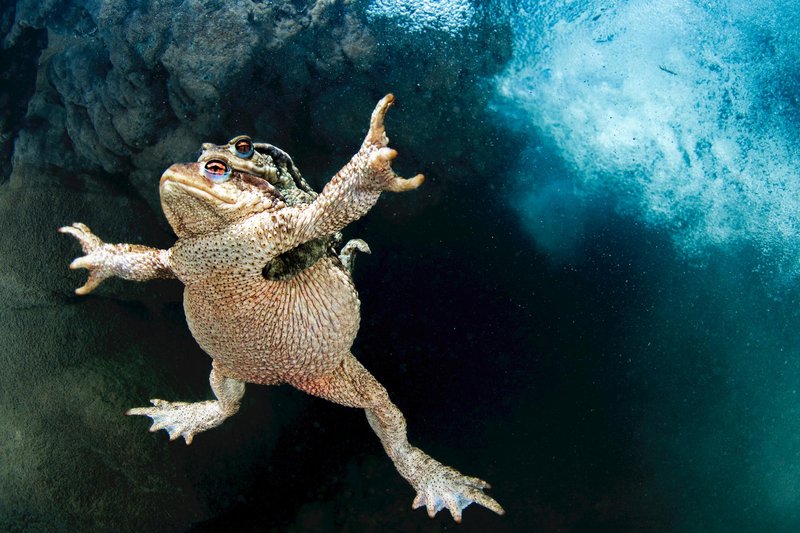
You might be wondering, why focus on newts? Beyond their charming appearance, newts have unique traits that set them apart from other amphibians. From regeneration capabilities to their incredible life cycles, there’s so much to learn. So, let’s get started with these ten fascinating facts about newts that will make you appreciate them even more.
1. Newts Are Not Just Small Salamanders
Many people confuse newts and salamanders. While they belong to the same family, newts are a distinct subgroup of salamanders. You might visualize salamanders as those robust creatures that can often be seen lounging on rocks, while newts have a more streamlined, sleek appearance, especially when they’re in water.
Newts typically have a more aquatic lifestyle during certain life stages. They undergo a fascinating transformation: larval newts start life in water, sporting external gills, and later develop lungs to live on land. This dual life is one of the standout characteristics that differentiates newts from their salamander cousins.
Plus, newts commonly have a more pronounced warty texture during the adult phase compared to salamanders, which tend to have smoother skin. This warty appearance isn’t just for show; it helps them retain moisture and can even deter predators due to its unappealing texture. So, when you see a newt, remember—they’re not just small salamanders; they’re unique creatures with their own story!
2. They Have Mind-Blowing Regeneration Abilities
Have you ever wished you could regrow a lost limb? Well, newts can do just that! One of the most impressive traits of newts is their ability to regenerate lost body parts. If a newt loses a leg, tail, or even a portion of its heart, it can regrow the lost part over a few weeks to months without any scarring.
This regeneration process is not only limited to limbs. Newts can also regenerate eyes, spinal cords, and even parts of their brain. Researchers are fascinated by this ability and are studying it to understand the underlying biological mechanisms. Who knows? Insights gained from newts might even lead to breakthroughs in regenerative medicine for humans someday.
So next time you see a newt, think of them as little miracle workers of nature, constantly demonstrating the incredible power of regeneration!
3. Newts Have a Unique Breeding Cycle
Breeding time for newts is quite a spectacle! Typically, newts head to water during the breeding season, which usually takes place in early spring. They perform an intricate courtship dance that involves elaborate movements and color displays to attract mates. Males often display vibrant colors, especially during this time, to impress potential partners.
Once paired up, the male newt has an interesting method for fertilizing eggs. He deposits a spermatophore, a packet of sperm, and tempts the female to pick it up. After fertilization, she lays eggs in clusters, attaching them to aquatic plants. This process is both an art and a science, showcasing the complexity of newts’ life cycles.
The eggs hatch into larvae, which look different from adults—they have gills and are fully aquatic. As they grow, they gradually transform, losing their gills and developing lungs, preparing them to venture onto land. It’s like a magical transformation, reminding us how nature has its way of fostering life.
4. They’re Masters of Camouflage
Newts might be small, but they excel in the art of disguise! Many species of newts have developed skin colors that blend seamlessly with their surroundings, helping them hide from predators. You might find them in shades of brown, green, or even vibrant orange. This clever camouflage allows them to remain undetected while they hunt for insects and small invertebrates, or when they’re just chilling.
Interestingly, some newts also have toxic skin secretions that serve as a defense mechanism against predators. The bright colors often seen on certain species act as a warning sign, indicating that they’re not palatable. This strategy, known as aposematism, is a fascinating example of how nature equips organisms with tools for survival.
So, the next time you’re outside, keep your eyes peeled for these crafty little critters. You might just spot a newt blending into its environment!
5. Newts and Their Poisonous Skin
While we’re on the topic of newts’ skin, it’s worth noting that although they can be cute, they’re also *toxic*. Newts possess a variety of chemical compounds in their skin that can be quite poisonous. This is particularly true for species like the California newt, which contains a potent toxin called tetrodotoxin.
Tetrodotoxin is the same toxin found in pufferfish, known for being extremely dangerous. This toxin can cause paralysis or even death if ingested, making newts quite unappealing to potential predators. It’s nature’s way of saying, “Look, but don’t touch!”
Interestingly, some animals have adapted to feed on newts despite their toxicity. For example, certain snakes have developed resistance to these toxins, allowing them to munch on newts without any harm. It’s a fascinating example of the ongoing battle between predator and prey in the wild.
6. Newts Play a Vital Role in Ecosystems
Even though they’re tiny, newts have an outsized impact on their environments. They are essential for maintaining the balance of ecosystems, especially in wetland areas. As both predator and prey, newts contribute to the food web by feeding on various insects and small animals, while also providing sustenance for larger creatures.
Newts help control insect populations, which can be beneficial for agriculture and gardening. By keeping certain insects in check, they help create a healthier ecosystem. Plus, their presence often indicates a healthy environment. If you find newts thriving in an area, it suggests that the habitat is clean and supports diverse wildlife.
So, while they may seem insignificant in size, newts remind us of how every creature, no matter how small, plays a crucial role in maintaining the natural balance of our planet.
7. They Can Chill Out for Years
Here’s a fun tidbit: newts can enter a state called brumation, similar to hibernation, during colder months. During brumation, their metabolism slows down significantly, allowing them to survive long periods without food. This state can last several months to even a couple of years, depending on environmental conditions.
During this time, newts become less active and may burrow into mud or hide under rocks to keep warm. This energy-saving strategy is vital for their survival, especially in harsh climates where food sources are scarce. Honestly, it’s quite impressive how they’ve adapted to outlast tough conditions!
So, if you ever wonder where all the newts go in the winter, just remember—they’re probably snuggled up somewhere nice and cozy, waiting for warmer days to return.
8. Newts Are Primarily Nocturnal
If you’ve ever tried spotting newts during the day, you might have found it challenging. That’s because many species are primarily nocturnal. They prefer to come out at night when it’s cooler and safer from predators. This behavior helps them conserve energy and reduces their chances of being seen while hunting for food.
Being nocturnal also means that newts are more active during twilight hours. They explore their environments, hunt for insects, and engage in social behaviors. If you’re keen on trying to catch a glimpse of these fascinating creatures, a late evening stroll near ponds or wetlands might be your best bet.
Just remember to tread lightly and keep your eyes peeled; you might just spot one gliding through the water under the moonlight!
9. There Are Over 100 Species of Newts
You might be surprised to learn that there are over 100 species of newts worldwide! These species are found in a variety of habitats, from marshes to forests and everything in between. Each species has its own unique adaptations and characteristics, making them an incredibly diverse group within the amphibian family.
For instance, the Eastern red-spotted newt is known for its eye-catching orange-red spots, while the great crested newt features a striking crest along its back during the breeding season. This diversity is a testament to the adaptability of newts, allowing them to thrive in various environments.
Exploring the different species can be a fun journey in itself! Whether you’re a nature enthusiast or just curious, learning about the uniqueness of each newt species adds to our appreciation of wildlife.
10. Newts Have a Long Lifespan
Last but not least, did you know that newts can live longer than you might expect? Many newt species can live for 10 to 20 years in the wild, with some even reaching up to 25 years in captivity. That’s quite a long time for such small creatures!
Their long lifespan is partly attributed to their ability to adapt to various environments and their efficient use of energy through brumation. In captivity, with proper care, they can thrive and continue to amaze us with their unique behaviors and characteristics for many years.
This longevity gives us the chance to learn more about their habits and the ecosystems they inhabit. Watching a newt grow from a hatchling to an adult can be a rewarding experience, showcasing the wonders of nature up close.
In conclusion, newts are indeed remarkable little creatures, each with fascinating traits and behaviors that enrich our ecosystems. From their ability to regenerate body parts to their importance as ecological indicators, there’s so much to appreciate. So, the next time you encounter a newt, remember, there’s a whole world of wonders hidden beneath its warty skin! If you find yourself intrigued, give a newt a closer look—you might just be fascinated by what you discover.

